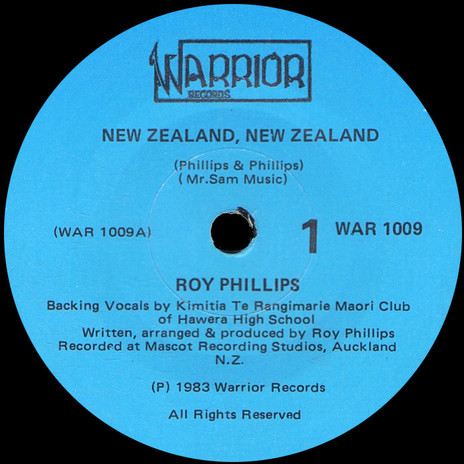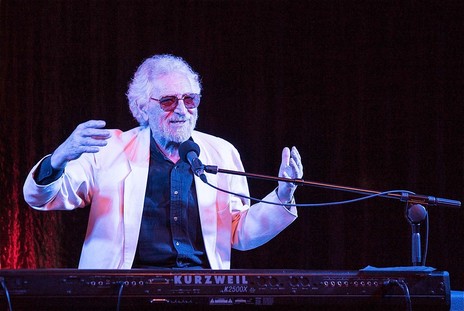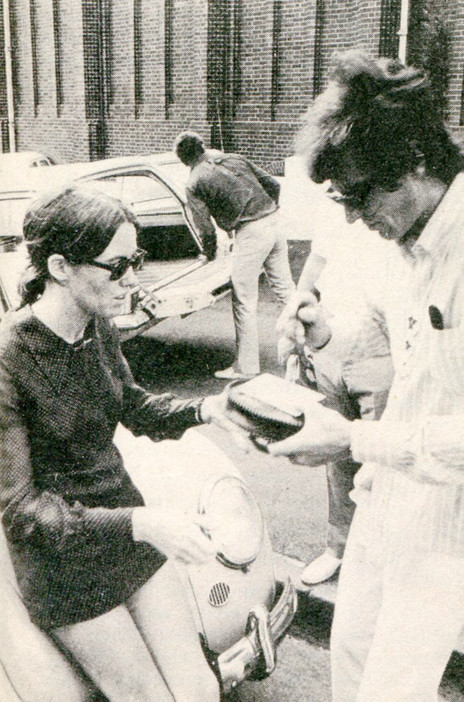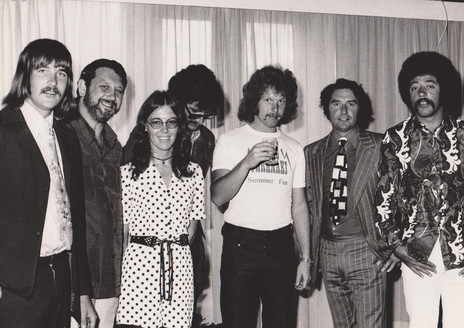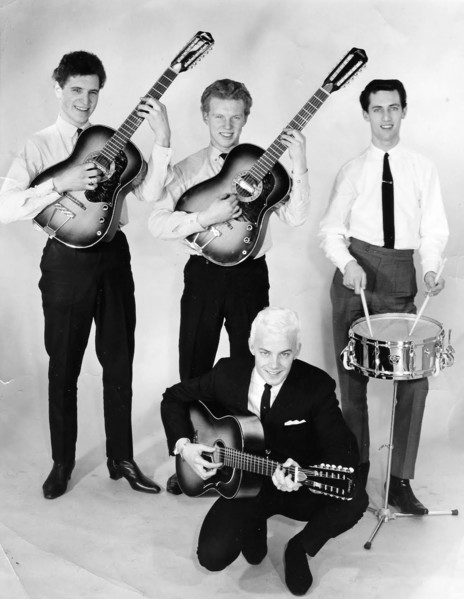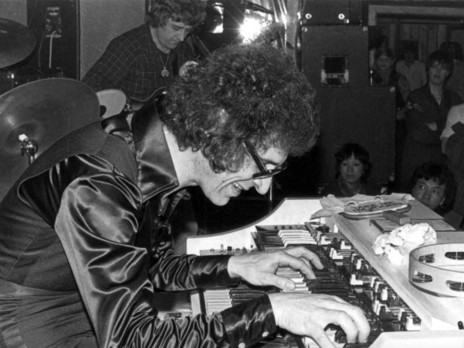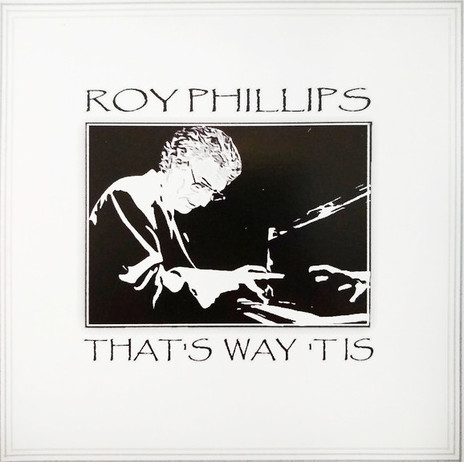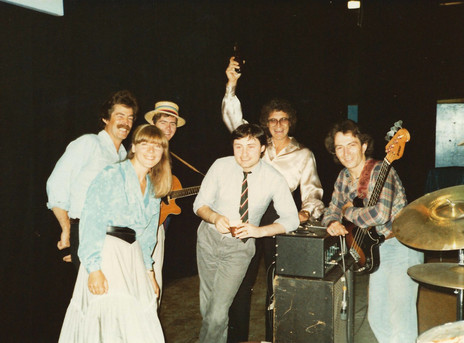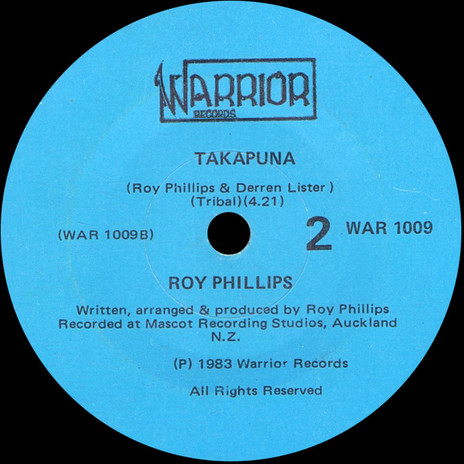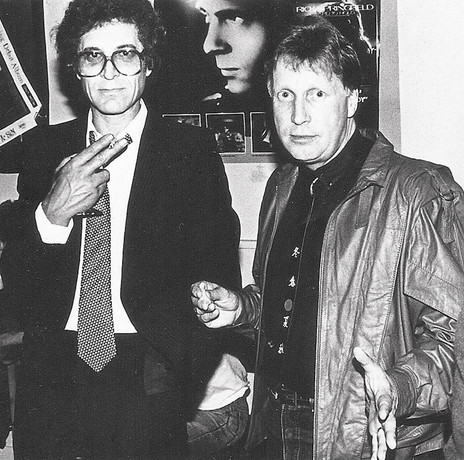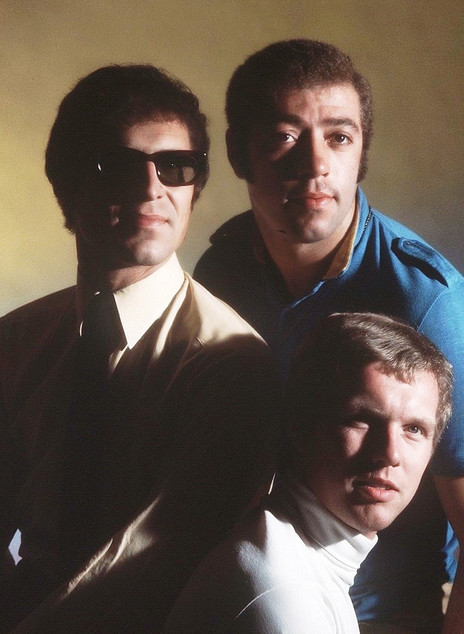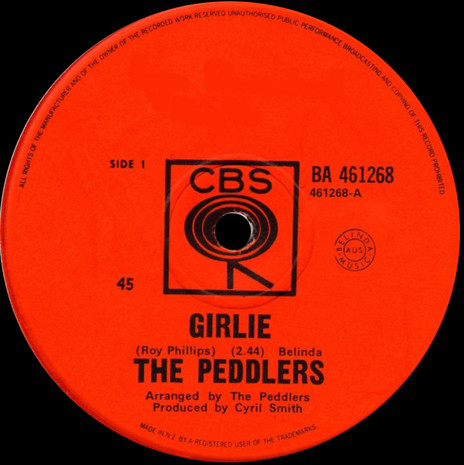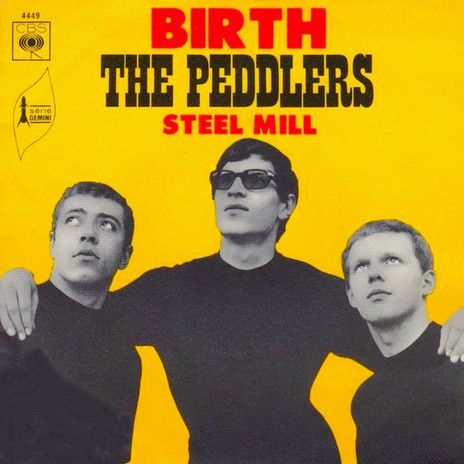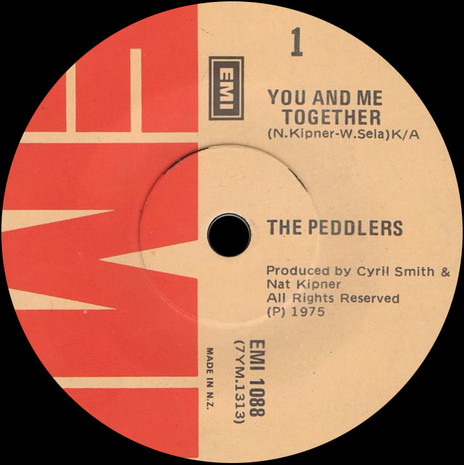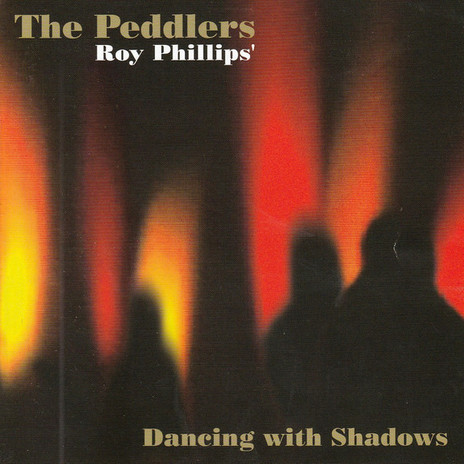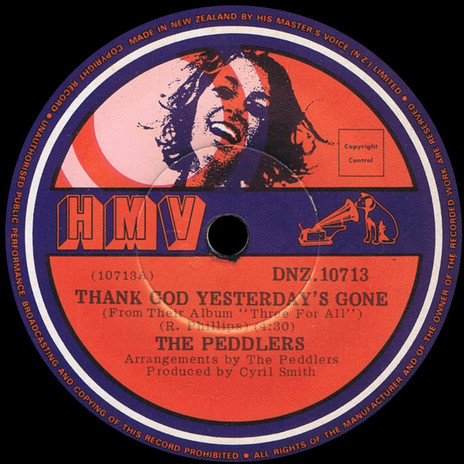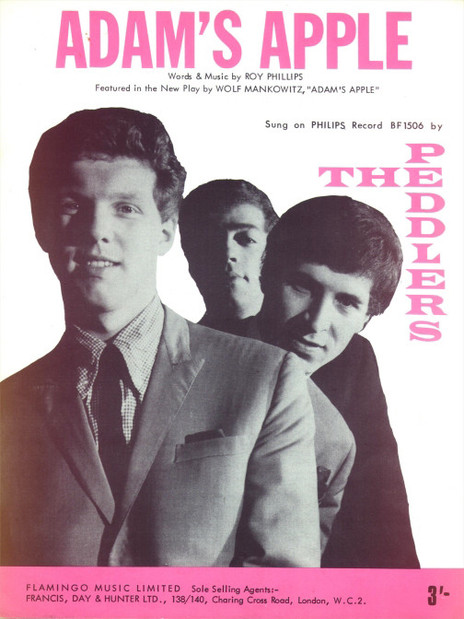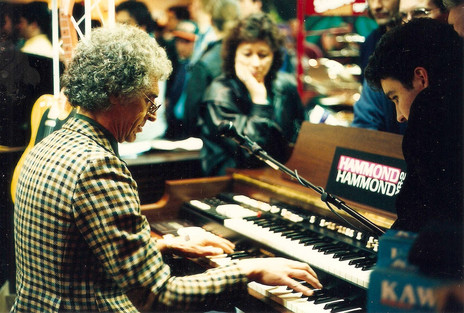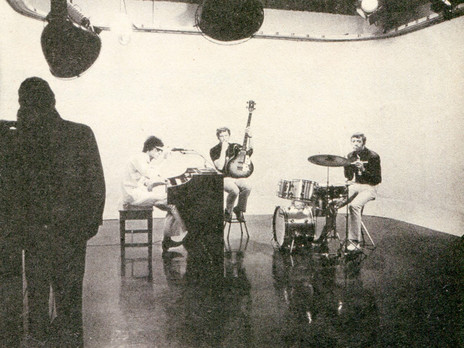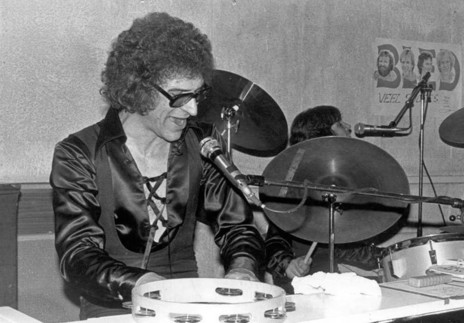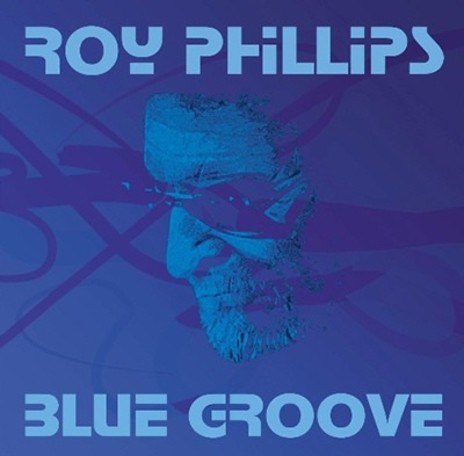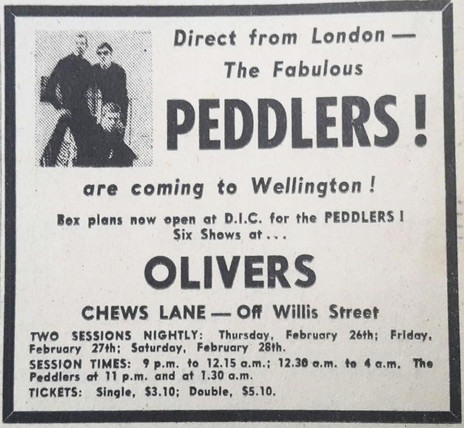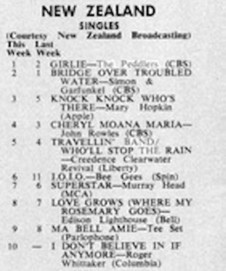In the swinging sixties The Peddlers did not fit easily into any one category of music, as they were not strictly rock, pop or jazz. But in the 21st century they fit into many categories including lounge, soul-jazz, mod and rare-groove. In 2013 their track ‘On A Clear Day’ featured in a climactic meth-lab scene on Breaking Bad; on Record Store Day 2019, it was reissued on a vinyl single. British DJ Norman Jay MBE included ‘Lost Continent’ by The Peddlers on his 2017 compilation LP, Mister Good Times.
The Unorthodox Joe Meek
Roy Phillips was born 5 May 1943 in Parkstone, Dorset. The sound of German planes remains a very early memory for him. As a teen he played guitar in the Bournemouth group The Soundtracks, who backed local Everly Brothers style duo The Dowland Brothers, who attracted the attention of London producer Joe Meek.
In 1962 Meek had the massive worldwide hit ‘Telstar’ with The Tornados. In early 1963, bass player Heinz Burt left The Tornados and Joe Meek put together The Saints to back him. Roy Phillips was on guitar and future Peddler Tab Martin was on bass. The Saints recorded several singles for Meek but when Heinz left Meek in April 1964, he left The Saints behind.
In 1964, Phillips and Martin met drummer Trevor Morais in Manchester. They were a trio looking for a singer to fill the gap in the front middle of the stage. In those days every group had a singer out front and the group that became known as The Peddlers were still looking for the right guy when they took to the stage with Phillips on vocals.
If you could get it, recording session money was important for a gigging musician and Phillips and Martin continued to work with Meek. They had to follow Meek’s non-musical, unorthodox instructions to earn their £7 session money. The producer’s behavior went from eccentric to crazy as the 1960s progressed. “It got freaky, black magic, pills,” recalls Phillips. “Joe would have a shotgun on the table and he’d start acting out a wild west thing.”
Phillips is candid about why he gave up guitar. “I was rat-shit at it. I could never improve on what I did ... My buddy in session work in those days was Ritchie Blackmore, he used to do all the fancy stuff.” (Blackmore later co-founded Deep Purple.)
With friends like Blackmore and Albert Lee, it was time for Phillips to find another instrument. “I can play a bit of solo but more in the Chet Atkins style,” said Phillips.
The Pickwick Club
The breakthrough for The Peddlers came when they secured a gig at the Pickwick Club, a private club in the West End where actors gathered. The group were booked for one month and stayed for 18 months. “It was like winning the lottery,” said Phillips. Offers walked in the Pickwick Club doors: recording sessions, TV work, radio plays, or a movie producer wanting a song. Even their early 1967 breakthrough album was recorded live at the club.
The owners of the group’s new home included playwright Wolf Mankowitz (Espresso Bongo, 1958) and comedian Harry Secombe. Mankowitz got Phillips to write the title track for his 1966 play Adam’s Apple. Jimmy Sangster from Hammer Films was a regular and he got The Peddlers to compose the theme for his 1968 movie The Lost Continent.
London’s Pickwick Club was where the actors went ... There was quite unruly behaviour.
“The club was in Leicester Square where there were 26 world famous theatres,” recalls Phillips. “Pickwick was where the actors went: Laurence Olivier, Julie Andrews, Richard Harris. That was their club. There was quite unruly behaviour. They didn’t have to fear newspapers being there. We had Princess Margaret down there. You’d have to pick Richard Harris off the floor.”
At the Pickwick Club, the group created a unique soundtrack for showbiz people that became the sound of The Peddlers. A bit of this and a bit of that, keep the crowd happy and a bit of this and a bit of that, aptly describes the sound of The Peddlers.
The Peddlers did not have a firm commitment to jazz. “No. It had to swing, I don’t care whether it was the McCartney thing, it had to groove, it had to swing. Tamla Motown had a great influence, not in the sense of copying, we just found our own groove.”
The Hammond organ
Roy Phillips did not start with a Hammond organ. He started playing a Lowrey Heritage in 1966 and played it on their debut album Live At The Pickwick. Ritchie Blackmore made Phillips feel inadequate on guitar but it was Manfred Mann who made Phillips feel inadequate on Lowrey organ. Mann said to Phillips, “Join the big boys.”
Phillips did so, but he had his Hammond B3 organ customised. He had wah-wah on the Lowry Heritage organ and a technician undertook the difficult task of achieving a wah-wah sound on a Hammond.
“It worked a dream,” said Phillips. Then we started putting things like ‘super emitter-followers’ in all the percussion things – that ‘ticka, ticka, ticka, ticka’ – you could really make it spit. When it worked so well on our recordings, you had top organists in the States like Jimmy McGriff saying, ‘What the hell is that thing?’ Jack McDuff wanted one. When Jimmy McGriff came to London, he knew if I wasn’t working he could use my beast.”
One player who would not want to borrow the customised gear was jazz player Jimmy Smith. His sound was pure. Phillips was a young player when he first met the legendary organist. “Jimmy Smith was at the back of the Festival Hall and I thought I’d like to go and meet this man, I admire what he does. I shook his hand and he held onto my hand and said, ‘How does it feel to have the hand of the greatest living Hammond organ player in your hand at this moment. Now tell me?’
“Oh, dear ...” Phillips says. He is still not impressed by Smith’s demeanour.
Music royalty
“One night down the Pickwick Club a guy said ‘move your arse’ and sat down on the organ stool and it’s Sinatra,” said Phillips. “He’s sitting there and he said, ‘What do you know? Do you know any of my stuff?’ I said, ‘Yeah, yes I do’. We did ‘That’s Life’ [Sinatra’s 1966 hit]. The Peddlers eventually recorded the song and he hated it. He said, ‘That’s not what I did, you cocksuckers.’”
Sinatra liked London and was in town a lot from 1966 to 1975 with sold-out concert seasons and in 1966 he had filmed London street scenes for the movie The Naked Runner. For a time, he had a London apartment. “Sinatra used to come in quite regularly,” said Phillips, “with Rod Steiger and his minder Jilly Rizzo.”
1967 started with a tragic event when producer Joe Meek murdered his landlady Violet Shenton and killed himself. Phillips was due to do a Meek session that day.
“I turned up this day and when I got outside Holloway Road, there were loads of police around. We used to pop into Mrs Shenton’s leather shop, downstairs, and every morning Mrs Shenton would make you a cup of tea. She treated Joe like a son. She’d feed him, give his cuppa tea, if he was sick with flu she’d tend to him at his bedside.
Each week The peddlers guested on tv shows hosted by David Frost, Lulu, and Many others.
“I walked up to one of the police and he said, ‘How can I help you?’ I said, ‘I’ve got a session here’ and he said, ‘No you haven’t’. They’d taken Mrs. Shenton off the stairs where Joe had shot her and Joe’s brains were making a lovely pattern on the top wall.”
With the release of Live at the Pickwick (Philips), The Peddlers were receiving accolades from the media including DJs John Peel, and Pete Murray, who wrote the liner-notes for the album. With a residency in London they were usually available to guest on any TV shows such as David Frost, Roger Whittaker, Lulu, Les Dawson, Engelbert Humperdinck etc, averaging one per week and sometimes recording three appearances in one day.
Frank, Pearl, and Dizzy
Six months later, at the behest of Sinatra and Mel Torme, the US circuit opened up for The Peddlers including June 1967 gigs at The Flamingo in Las Vegas. Phillips explained their manager’s connections. “Cyril Smith, he was in with the chaps. And the chaps ran the industry in America and the chaps ran the industry in England. We used to work for the Kray twins in their clubs.” If Ronnie requested a song “now,” The Peddlers could segue into the song within seconds – jazz players who improvise can do that with ease. Handy when playing for the mob.
Performing in the Las Vegas lounges was not easy work but The Peddlers got to see music legends such as Fats Domino, Louie Bellson and Lionel Hampton. “Your roster could be anything. It could be 4pm and you’d do 45 to 50 minutes. If you went over that, the power would be cut. Very strict, lights went up, you were gone. Next set maybe 10.30pm and next 3.30am or 4am in the morning.”
In 2017, Phillips told Wellington writer Simon Sweetman, “One of our first nights in Vegas, Sarah Vaughan knocked on the door and said, ‘Welcome to the United States’. Pearl Bailey was working there. Pearl and Louie used to come to the Pickwick as well. Pearl said, ‘I don’t want you to eat this hotel crap boys, you come along and I’ll cook you some real down home cookin’.’ We went to her apartment at the back of the hotel. In walked Dizzy Gillespie, put his trumpet down. Pearl asked, ‘Everybody hungry? Dizzy, do the duty!’ Dizzy Gillespie took out his horn and he played grace.”
The group’s first album for CBS, Free Wheelers, charted at No.27 in the UK. For major success in the US, you needed TV host Ed Sullivan on your side. “We did one Ed Sullivan show but we never got the call back.”
The Peddlers Give Birth
In the mid-1960s, London’s lively club scene had hot local soul covers bands usually with Hammond organs, as the soundtrack to the mod scene. As the decade progressed, players such as Graham Bond, Zoot Money, Alan Bown, and Brian Auger abandoned soul for psychedelia or prog-rock or jazz-rock. Soul men Jimmy James (from Jamaica) and Geno Washington (from the US) stuck with their roots, as did The Peddlers who also stayed true to their R&B/jazz base but with a repertoire that was heavy on standards. Georgie Fame, the long-time Flamingo Club headliner, also stayed grounded with his mix of R&B and jazz.
The Peddlers’ 1968 album for CBS, Three in a Cell, did not enter the UK sales charts. Phillips told Beat Instrumental magazine (October 1969), “Everything we do is aimed at the charts. If we’d had a hit I would not be driving around in a tatty old Bentley – I’d have a Rolls Royce.”
In May 1970 The Peddlers’ single ‘Girlie’ hit No.1 on the NZ Singles Chart.
The group’s 1970 album for CBS, Birthday, tried to package the group for the rock market with a gatefold cover featuring a risqué photo of a naked female model. The songwriting was also edgier, with strong compositions by Phillips: ‘Southern Woman’, ‘Girlie’ and ‘Birth’. The latter single would give the group its highest UK chart position at No.17. The album Birthday climbed to No.16 on the UK album charts and was the Peddlers’ final release on CBS. The cover was too sexy for the American market and the Birthday album cover was downsized to a more discreet single sleeve, a tummy-only cover.
The Peddlers had been working in Las Vegas and were promised by their management that prior to a European tour they would have a six-week holiday in Tahiti “to space-out and get very, very drunk,” said Phillips. New Zealand concert promoter Phil Warren swung into action and talked the band out of their holiday in the sun and into a six-week tour of New Zealand.
In March 1970, while The Peddlers were in New Zealand, their single ‘Girlie’ was released. With its distinctive wah-wah organ riff, and repeated plays on NZBC TV, the song made an impact throughout the country. On 22 May it reached No.1 on the NZ Singles Sales Chart, having only got to No.34 in the UK. The single knocked Simon and Garfunkel’s ‘Bridge Over Troubled Water’ from the No.1 spot, and remained in the New Zealand chart for 12 weeks.
The tour began at midnight at Mojo’s Nightclub in Auckland, with Peter Posa and suave TV host Rhys Jones in the audience on opening night. They played two shows a night, on Friday and Saturday, then Warren added two more on Sunday. While in Auckland, The Peddlers mimed ‘Girlie’ in the NZBC’s Shortland Street studio. The band then played what seemed like every town in New Zealand. Hard work, but Phillips loved it.
The local distributor of the CBS label, Philips Records, was hungry for repertoire and the then Head of A&R John McCready, recalled in 2017, “the whole team thought the album great and we worked closely with Phil Warren on that first tour and were repaid by terrific gigs, especially one in Wellington.”
The New Zealand success with singles continued in 1970. The Jimmy Webb song ‘Honey Come Back’ went to No.8 in July 1970 and ‘Tell The World We’re Not In’ went to No.18 in September 1970.
When The Peddlers returned to London they rejoined the Philips label and recorded the album Three For All in one day, 7 August 1970. That year, the new single track ‘Tell The World We’re Not In’ featured in the horror film Goodbye Gemini. The excellent album Three For All has a fancy gatefold design like a giant matchbook echoing the effort made to package credible “rock” albums of the time.
Groovy tracks and hip artwork did not dig them out of their cabaret niche, but there was an insatiable demand for The Peddlers to play live in Europe. In 1971 they did a second New Zealand tour.
In 1972, The Peddlers recorded their most ambitious project: the Roy Phillips-composed album Suite London with The London Philharmonic Orchestra. They recorded for the Philips label at two large London studios, AIR and IBC. Although the album lacks the immediacy of the Peddlers’ classic sound, ‘I Have Seen’, a song from the suite, was released as a single by English musicians Zero 7 in 2001. The Peddlers’ Suite London was reissued on vinyl in 2018.
On 24 February 1973, The Rolling Stones played an outdoor concert in Perth and, after the show some of the band visited the Gobbles nightclub where The Peddlers were playing. Phillips told “Billy Wyman, a regular at the Pickwick Club” that they needed a new drummer and the Stones’ bassist praised a young player who just opened for them. Calls were made and the drummer, New Zealander Paul Johnston, was in The Peddlers and in London a few days later.
Johnston had to follow one of England’s finest drummers and he did so admirably. His playing is captured on Live In London, recorded in November 1973 and released in 1974. Morais went on to work with Rupert Hine in Quantum Jump, Björk and Underworld.
When The Peddlers disbanded in 1976, Paul Johnston returned to Perth and continued to play jazz, Latin and sessions, until he returned to New Zealand in 1996 to work as an osteopath and acupuncturist in Wellington. Johnston died in 2013.
In 1979 the New Zealand label Gemini released The Peddlers Live In Amsterdam LP, recorded with a line-up of UK musicians who were not in the earlier line-up pictured on the cover with Phillips.
Fawlty Towers
“In 1981, I knew I wanted to live in Waitangi,” said Phillips. “I wanted a real good rest, to put my clogs up.”
Phillips decided to open a restaurant. “The whole place turned out like Fawlty Towers,” recalls Phillips who, to lower expectations, put signs up such as “Courteous service available upon request” and the less popular “Pensioners half-price if accompanied by their parents”. “That’s an episode best forgotten.” It took Phillips 12 years to sell his modest café.
In 1983 Phillips wrote, arranged and produced AN ode to his ADOPTED homeland.
In 1976 Phillips released the album Mr. Peddler on WEA Records, New Zealand. Former Peddler Paul Johnston played drums and Phillips played all other instruments including Moog bass. The songs were composed by Phillips, except Labi Siffre’s ‘Make My Day’. The album was entitled Heavy On The Light Side in the UK but it was not officially released there. The song ‘It’s A Shame’ can be heard on YouTube but was mistakenly called ‘It’s So Easy’ on the Mr. Peddler album cover.
In 1983 Phillips wrote, arranged and produced his ode to his new homeland, ‘New Zealand, New Zealand’ at Mascot Studios. The backing vocals were by Kimihia Te Rangimarie, the Māori culture group from Hawera High School. The single was released on the studio’s Warrior record label.
With tax rebates fuelling the New Zealand movie business in the 1980s, Doug Rogers of Harlequin Studios created Spinifex, a scheme to gain investor money from outside the music business. The idea was to use top producers to record albums by three recording artists with international sales potential. The chosen three were Hello Sailor, The Exponents and Roy Phillips. In 1986 the two groups released their respective albums – Shipshape and Bristol Fashion and Amplifier – on Rogers’ Zulu Records in New Zealand, but they did not achieve overseas releases.
On his album Roy Phillips worked with Mallory Earl, who produced the 1979 Split Enz album Frenzy. In 1987, one single was released from Phillips’ sessions, ‘Step By Step’ b/w ‘All Girl Planet’ on Zulu Records. The album was never released and the groups never recorded their follow-up albums. “I’m still very angry about that situation,” reflects Phillips.
A decade later, another song to his adopted homeland came in 1996 when ‘The Dream’ was written and recorded by Phillips to support the New Zealand team at the Atlanta Olympics.
A final Peddlers album, Dancing With Shadows, was recorded at Billy Kristian’s Muscle Music Studio in Northland but ownership issues meant that the release (via Ode Records) was delayed until 2007.
When reissuing the Peddlers’ music in 2002, CBS took the unusual step of releasing their complete recordings on an anthology entitled How Cool Is Cool. There is a consistent quality and some gems among the once throwaway B-sides. Roy Phillips’s playing never detours into needless displays of virtuosity. Of the 42 tracks, the only poor one is their foolhardy rearrangement of Frank Sinatra’s ‘That’s Life’.
When the highly regarded German reissue label Bear Family Records released Hammond Heroes: 60s R&B Organ Grooves (2005), Phillips was one of the 23 players, represented by The Peddlers’ ‘Horses Collar’.
A 2006 CD release, That’s Way ’Tis, featured 11 of his own compositions with guest vocals by Hine Marchand. In September that year, Phillips recorded a live DVD in Christchurch, performing Peddlers’ favourites and some new songs.
Phillips performed a concert at the Sky City Theatre, “The Peddlers Revisited”, on 25 May 2009. He played Hammond and Kurzweil keyboards, with Bruce Kerr on bass and Mickey Ututaonga on drums.
After a moving to Christchurch in 2002, Phillips set up his own home studio, The Groove Room, in 2010. His current instrument is the very portable Kurzweil 2500x that can be heard on his 2014 release, Blue Groove.
In 2019 he returned to playing Hammond organ, recording an album of standards, Peddlers-style.
Roy Phillips passed away on 24 April 2025.
